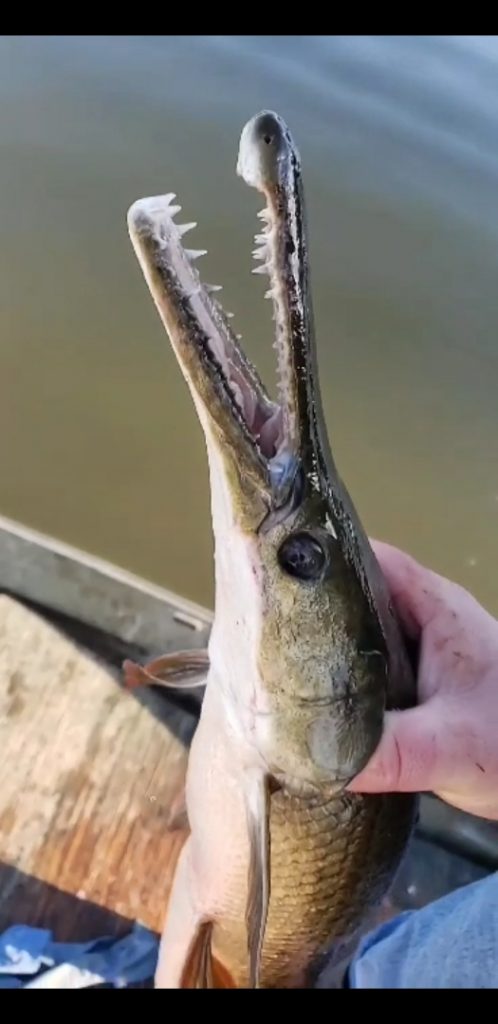
Odd Pair Of Fish Caught In Columbia Near Tri-Cities
Add another unwanted toothsome species to the Columbia River system — this time a really, really unexpected one.
Gar.

A pair of alligator gar were caught by a commercial carp fisherman while live-netting last week near Bateman Island, near the mouth of the Yakima, but were released because their permit did not allow them to keep nontarget species.
That permit has since been modified to be able to remove the fish if encountered again, says Darren Friedel, WDFW’s Region 3 fisheries manager, this afternoon.
The two fish are described as 24 and 36 inches long by biologist Paul Hoffarth, with the bigger of the two said to be “pretty healthy” looking.
Hoffarth says photos taken by the fisherman and sent to him were forwarded to biologists in the South for a positive identification. While he thought it was possible they might be shortnose instead of alligator gar, Dr. Solomon David, an expert on gar and who saw the above picture, said it was definitely an alligator gar.
“Key ID feature is prominent second row of teeth in upper jaw (in alligator gar) as photo indicates (shortnose gar lacks this feature). Luckily those fish are likely immature and would not be able to establish population,” David tweeted in response to our Twitter post.
WDFW was not taking any chances.
Friedel says his agency is coordinating with the Yakama Nation, which sent a crew to electroshock the area, though without success, and the U.S. Geological Service is expected to send a team to try and capture the fish as well.

Alligator gar are native to the Gulf Coast and lower Mississippi River system and can reach lengths of 9 feet.
Apparently a few have been released outside of their native range, including in California, South Carolina and some Asian countries, but “no established populations have been documented,” according to USGS.
Shortnose gar overlap with alligator gar at the southern end of their range but are also found in the upper Mississippi, as well as Missouri and Ohio Rivers.
Friedel suspects the gar came from somebody’s pond or aquarium and said that fish raised in those conditions typically don’t do well when released in the wild. Alligator gar are classified as an aquatic invasive species and state law bars releasing them, with those who do so liable for the cost to control them.
“We don’t have evidence of a widespread problem,” Friedel says.
Further up the Columbia there definitely is a widespread problem with another fang-faced predator — and this one adapted to much colder waters than gar.


Northern pike are gradually closing in on the anadromous zone, with some having been caught in lower portions of Lake Roosevelt, including a 28.2-pound female in the Sanpoil Arm last spring.
WDFW, multiple tribes and utility districts are working to suppress their population through gillnetting and a sport reward program that pays $10 a head for northern noggins.
While recreational fishing is closed due to Governor Inslee’s “Stay home, stay healthy order,” commercial fishing has been deemed to be an essential activity, irking sport anglers. Friedel says that commercial carp fishing occurs in backwaters of the McNary Pool and Vancouver Lake via trammel net, with fish sold for religious holiday meals and caviar.

